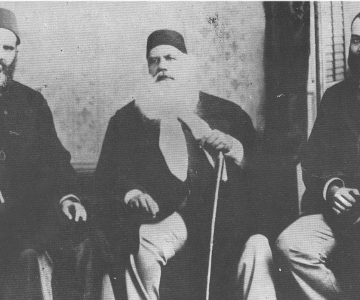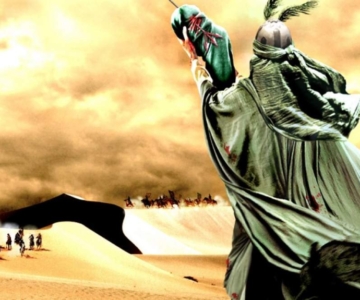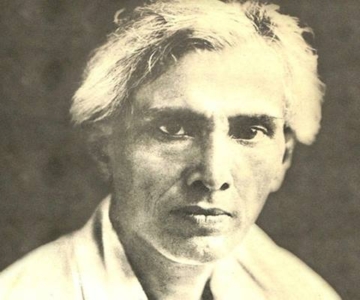I am posting an article by that was published by The Friday Times. This is a great piece:
Fascination with the naughty butter-thief Krishna in the Punjab remained the undercurrent of the cultural milieu for so long that Waris Shah’s Ranjha appears to be a reincarnation of Krishna in many aspects. Khawaja Ghulam Farid, the great Sufi poet, also considered Krishna a sacred prophet of the Hindus like all other prophets. But the question is how did the dark skinned Lord come to dominate the land of the fair Aryans who believed that a dark man ‘seen seated in the market-place [is] like a heap of black beans.’
Upon invading the Punjab in the fourth century, the Greeks observed that worship of the Indian god Krishna was prevalent. The Greeks likened him to their own god Hercules, a matchless athlete, burnt black by the sun who married many nymphs, as did Krishna. The Greeks also equated their god Dionysus with the Vedic god Indra who is portrayed as a hard drinker and a tough fighter in the Rigveda. The war between the Krishna and Indra cults continued in the fertile regions of the Punjab. Indra brought knowledge of iron and metals, the use of oxen for agriculture and knowledge of the art of house building. But Krishna’s appeal was more transcendental.
In the beginning Krishna was the god of the Yudas, one of the five Aryan tribes of the Punjab who continued warring with each another. The famous epic war of the Mahabharata was an inter-tribal war between two rivals, the Kauravas and the Pandavas, within the Yudas tribe. According to historians, Krishna’s entry into the war on the Pandava side is a later insertion into the Krishna story. Therefore, the Hindu scripture Gita, a dialogue between Lord Krishna and the bravest and most skilled warrior of the Pandava brothers, Arjun, may have been created much later than the Mahabharata. Although the Yudas finished each other off within the thirty six years of the Mahabharata war, the cult of their god Krishna continued to prevail.
In the Rigveda, Krishna is portrayed as a demon, the enemy of their most popular god Indra. Krishna was a symbolic representative of dark skinned pre-Aryan Punjabis in early Vedic writings. However, in later literature, Krishna started emerging as a saviour by protecting cattle from Indra’s attacks. The conflict between Krishna and Indra is reflective of tribal wars between the Nagas and the Kauravas: Indra is on the Nagas’ side and Krishna helps the junior Pandava (branch of the Kauravas) to successfully crush the Nagas. This episode further boosted Krishna’s image as opposed to that of Indra.
It is hard to verify the exact point at which Krishna replaced Indra’s cult in the Punjab. However, it is clear that it happened during the period when pastoral life was giving way to a settled agrarian society. Indra’s image may have better suited a community which was continually fighting and offering sacrifices. But, for the settled agrarian society this was costly, unsettling and intolerable. Therefore, the new society found a better substitute in Krishna. His image was also more appealing to the pre-Aryan people who had been suffering at the hands of Indra’s followers.
Furthermore, the aborigine tribes who had long survived at the level of food gathering, were subjugated by herd breeding and agrarian Aryans, or were forced to surrender to them because of natural calamities like droughts. Food gathering communities, being small and thinly scattered over vast areas needed much more land per head and were always vulnerable to invaders and the forces of nature. Unfortunately, they had to join Aryan society at the lowest levels as Shudras or even below that.
Many of Krishna’s marriages are said to have been with indigenous women. Apart from Vrinda and Radha, Krishna’s wives are said to be 16,108. Some of the wives like Jambavati, daughter of the ‘bear’ clan, belonged to an old tribe. Another wife, Rukmini, was associated with the Bhojas who were considered savages at that time. Many of Krishna’s wives were paris (fairies) or water nymphs. The variety in Krishna’s wives shows how different local aborigines and Aryans were inter-marrying and how the beliefs of various cults were being amalgamated into Krishna’s image. Furthermore, it was a way of assimilating patriarchal Aryans with matriarchal pre-Aryans or aborigines.
Incidentally, marrying the women of opposing tribes or states has been used as a method of peaceful conquest by many rulers in history. To enhance his empire, Akbar married a Rajput chief’s daughter, Hira Kunwari (popularly known as Jodha Bai), and began the tradition that the eldest son of a Mughal emperor would always be married into a Hindu ruling family. Even the fundamentalist Aurangzeb married his eldest son Bahadur Shah into a Hindu family. Ranjit Singh followed the same technique of marrying his opponents’ daughters or sisters to extend his control over other Sikh misals (small states of Punjab carved out by Sikh warriors) and the adjoining Hindu hill states. But since Krishna was not a historical person his marriages were a reflection of emerging social layers of society and its system of belief.
Krishna’s predecessor, Buddha, was a real historical person who taught the importance of the simple things of life. In contrast Krishna is a divine force with complex and sometimes contradictory messages. The portrayal of his character is not very consistent either: he is a lovable infant, a naughty shepherd, a lover of all milkmaids, the husband of thousands of goddesses, and yet devoted to Radha, representative of the highest morality. He also justified lying and foul play to win a war. His worship shows that divergent groups were being synthesized into a whole but were not yet fully reconciled. It further shows that the level of production and the system of ideas had not emerged from the primitive stage as yet. However, in his seemingly inconsistent personality, society was able to find a common thread to hold it together.
Most of the colour conscious fair skinned Aryans had to embrace the dark skinned god to further their socio-economic goals. Nevertheless, the most prosperous areas of the Punjab did not give up worshiping their old god Indra. The pre-Aryans in these areas also reconciled the worship of Indra with that of Krishna.
Punjab’s Sufi scholars and poets have also used Radha and Krishna’s symbols to bring about a new unity among people of different origins, castes and religions. As stated earlier, Khawaja Ghulam Farid, according to Muqabees-al-Majalis, a chronicle of the Khawaja’s daily activities compiled by a disciple, stated that Krishna and Ram were two prophets of the Hindus who were just like all other prophets.
Most of all, Waris Shah’s characterization of Ranjha resembles that of Krishna. Ranjha, portrayed by his sisters-in-law, is a flute playing lover of numerous women. He is innocent but when it comes to debating with the mullahs he uses very harsh language and disarming arguments. When a sailor refuses to take him across the river he uses his charms with the sailor’s two wives and gets his way. He begs Balnath, the then chief of the Kanphata Jogis to give him jog (certify his credentials as a spiritualist), but after granting him jog when Balnath narrates the rules of the profession by which every woman was to be considered a sister or a mother, he turns against him, saying that if he is becoming a jogi because of his desire for a woman, then how can he follow this rule? He threatens to report Balnath to the authorities for deceiving young men.
Ranjha tries to pretend to be a great jogi in his encounter with a goat shepherd, but when his identity is exposed, he begs the shepherd to keep the secret to himself. Likewise he uses trickery and assumes a false identity in Heer’s in-laws’ village. Despite all his trickeries however, Ranjha is the most idealized character for Punjabis of all religions, castes and classes. As is the case with Krishna, divergent groups of people can appreciate his basic humanity and relate to him, and see no inconsistency in his character.
Ranjha’s cultic personality was further developed by Waris Shah in the 18th century when Punjabi society was going through a fundamental transformation. The traditional class structure was being destroyed and new alignments were being created. Therefore, his seemingly inconsistent character was appealed to this diversity just like Krishna endeared himself to the new formation of society in which Aryans and pre-Aryans were merging together. However, unlike Krishna, Ranjha wages an intellectual war with different institutions of society. Krishna had to fight his maternal uncle Kamsa and many others with arms, but Waris Shah’s Ranjha intellectually opposes the institutions of property, orthodox religion, the greedy emerging trading class, the abstract practice of jog and the oppressive role of the entire ruling elite. Waris Shah through Ranjha’s encounters and debates with his brothers, the mullahs, the mallah (the sailor), Balnath and the Sial chiefs, exposes and fights against the very foundations of an unjust society.
Dr Manzur Ejaz taught at the Punjab University, Lahore, for many years and now lives in Virginia



